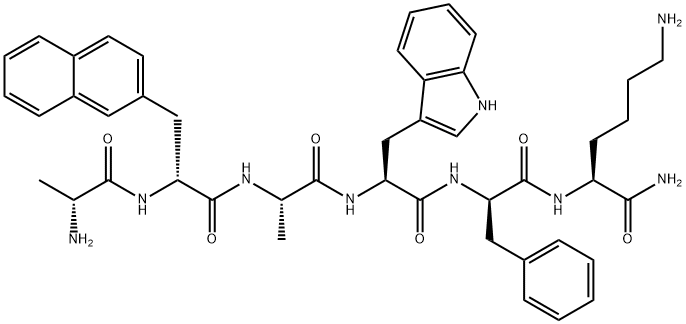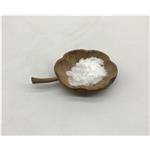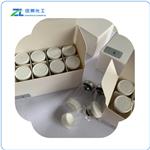Description
Pralmorelin (also known as KP-102, GPA-748, GHRP-2, and Growth Hormone Releasing Peptide-2) is a potent GH secretagogue in development as a diagnostic agent for growth hormone deficiency and for the treatment of pituitary disorders and GH deficiency. It acts as signal molecules that are involved in the control of cell growth and differentiation.
Uses
Growth hormone releasing factor. Pralmorelin is a growth hormone secretagogue that acts on the pituitary gland and the hypothalamus to stimulate and amplify pulsatile growth hormone release.
Definition
ChEBI: Pralmorelin is an oligopeptide.
benefits
Regulation of blood pressure, increased strength and healing, reduced injury, increased cell rejuvenation, increase in lean muscle mass and stronger bones.
Biochem/physiol Actions
Pralmorelin, also known as Growth hormone-releasing peptide 2 or GHRP-2, is an orally-active, synthetic peptide analogue of met-enkephalin that acts as a ghrelin/growth hormone secretagogue receptor (GHSR) agonist to selectively stimulate the ghrelin receptor and cause growth hormone release. Pralmorelin (GHRP-2) has been used clinically for the assessment of growth hormone deficiency (GHD), It has also been shown to have anti-inflammatory activity.
Mechanism of action
GHRP-2 is an agonist of ghrelin, a gut peptide and also known as “the hunger hormone”, which binds to the growth hormone secretagogue receptor. Pralmorelin works to enhance natural growth hormone production in two ways. First, the GHRP-2 intensifies the natural growth hormone releasing signal, resulting in a substantial secretion of growth hormone. Second, it suppresses a hormone in the body called somatostatin, also known as growth hormone inhibiting hormone (GHIH). Somatostatin generates the body to decrease its natural growth hormone production. By restricting the activity of somatostatin, GHRP-2 can improve growth hormone creation, resulting in increased natural growth hormone levels. GHRP-2 also activates ghrelin, a peptide hormone produced in the gastrointestinal system, which has strong effects on growth hormone production and appetite.
Side effects
No side effects or toxicities were observed. Thus, GHRP-2 is well tolerated and can stimulate GH secretion. Formulations or routes of administration that allow for a longer duration of action will likely be needed to use GHRP-2 in therapy[1].
References
[1] V Mericq. “Effects of eight months treatment with graded doses of a growth hormone (GH)-releasing peptide in GH-deficient children.” Journal of Clinical Endocrinology & Metabolism 83 7 (1998): 2355–60.



